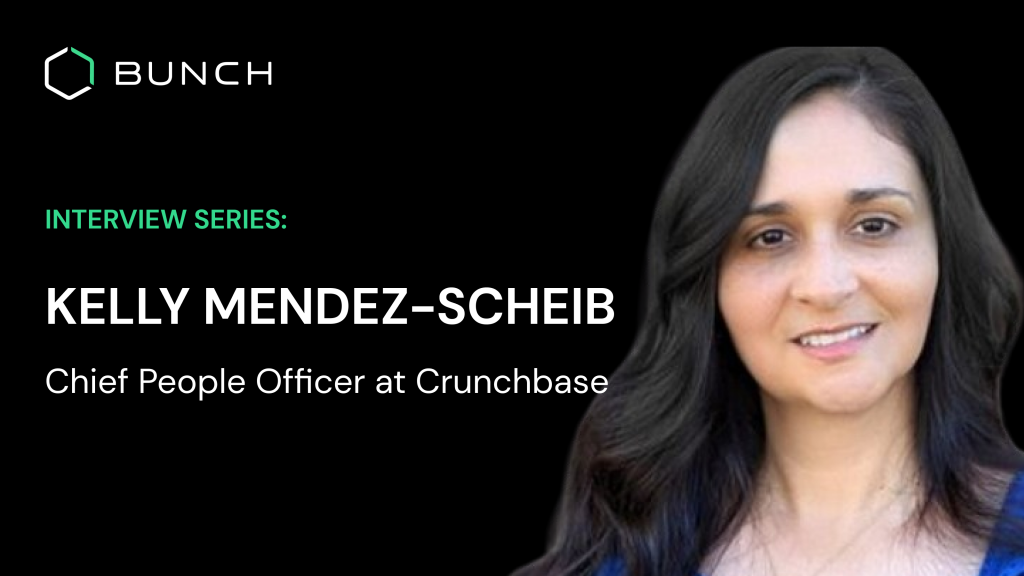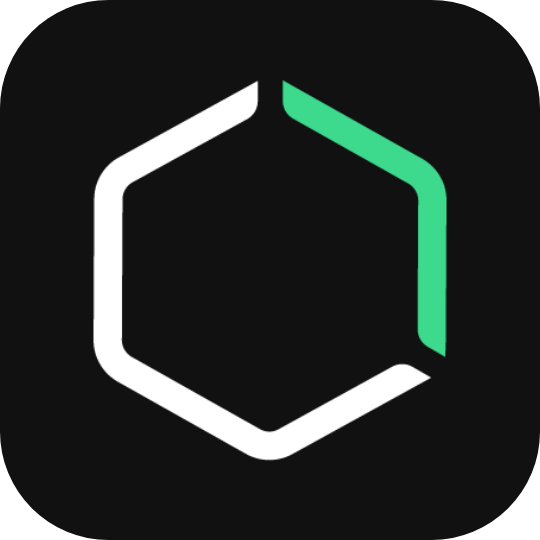
We don’t prescribe specific learning paths but allow autonomy in choosing development opportunities.
Kelly Mendez-Scheib
In this edition of our new Leadership Development Interview Series, we sat down with Kelly Mendez-Scheib, CPO at Crunchbase, who told us about some of her team’s initiatives to amplify an already very “people centric” culture, why they value authenticity as a leadership trait, her approach to growing leaders, and the importance of providing “horizontal” growth opportunities.
Kelly, can you tell us a bit about your current role?
I’m Crunchbase’s first Chief People Officer. I joined about a year and a half ago with the intention of amplifying what was already wonderful about the company. Crunchbase is extremely people-centric, and my role was more about amplifying the existing culture rather than trying to change it.
What does leadership mean to you, and which skills do people need to succeed as a leader?
Leadership is broad and encompasses various styles. At Crunchbase, authentic leadership is highly valued. Being authentic allows leaders to be transparent, which aligns well with the company’s radical transparency approach. This authenticity creates a unique environment where employees don’t have to decipher hidden meanings behind leadership actions.
What does leadership development look like at your company? Which tools and programs do you have in place, and how do you currently select new leadership talent to develop?
We focus on both functional and soft skills development. LinkedIn Learning courses and internal growth programs cater to this, allowing employees to chart their own growth paths. We don’t prescribe specific learning paths but allow autonomy in choosing development opportunities.
What was your biggest success story with implementing or improving a leadership development initiative? We’re also interested in hearing stories about what didn’t work!
In the past year, we’ve implemented systems like Lattice and LinkedIn Learning to systematize our approaches. However, we’re cautious about change fatigue and aim for sustainable, well-considered implementations.
What are some current challenges with leadership development overall in your company? What are hard parts about developing leaders?
Optimizing systems launched in 2023 is a priority for 2024. We aim to establish clear horizontal growth paths alongside the existing vertical ones to ensure continuous growth for employees at all levels. Maintaining the balance between growth opportunities and organizational structure integrity is challenging.
Have you considered using AI tools in developing the future generation of leaders? Why/why not?
AI tools have tremendous potential in HR tech, offering ease and efficiency. However, my concern is an overemphasis on AI, potentially replacing crucial human elements like empathy in interactions.
What applications of AI seem most promising to you from a leadership development standpoint? Where does AI fall flat?
AI tools can assist in compensation, email writing, policy creation, and insights generation. But they fall short in replacing the human touch required in sensitive situations or in-depth conversations where empathy and understanding matter significantly.
In regards to implementing horizontal growth paths, what specific strategies or tactics have you found effective?
We utilize technology like the Lattice platform to document individual growth plans, allowing integration with OKRs and customized training modules. Additionally, we empower employees to choose their learning paths, fostering a sense of ownership in their development.
What do you believe is the potential for AI in offering support for HR while maintaining the crucial human aspect in interactions?
AI has substantial potential in providing quick data or assistance in tasks like compensation or email writing. However, it’s crucial not to over-rely on AI and lose the irreplaceable human connection needed in delicate situations or personal conversations.
Can you elaborate on the challenges you face in maintaining a balance between growth opportunities and organizational structure integrity?
While vertical growth paths are clear, establishing horizontal growth opportunities is a challenge. It’s essential to avoid creating too many layers within the organization or pushing a “grow or leave” culture while ensuring sustainable growth for employees.
Considering your extensive experience, what strategies have you found most effective in implementing sustainable changes within an organization?
Slow and thoughtful implementation is key. Avoiding frequent changes and considering the absorptive capacity of the organization during times of significant change helps in ensuring sustainable adaptations and growth.
What is your view on preserving the human element while integrating technology and AI into HR functions?
Technology and AI offer efficiency, but they should complement rather than replace the human element, especially in situations where empathy and understanding are crucial. Maintaining a balance ensures effective use of technology while retaining the essence of human connection in HR interactions.
To learn from more experts on how to grow leaders at your company, check out our full list of interviews here.
If you’re looking to grow future leaders at your own company, get in touch to see how Bunch can enable you to give every person in your company a personalized, continuous development program in just 2 minutes a day.





